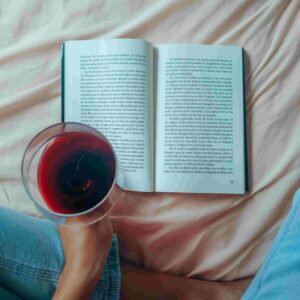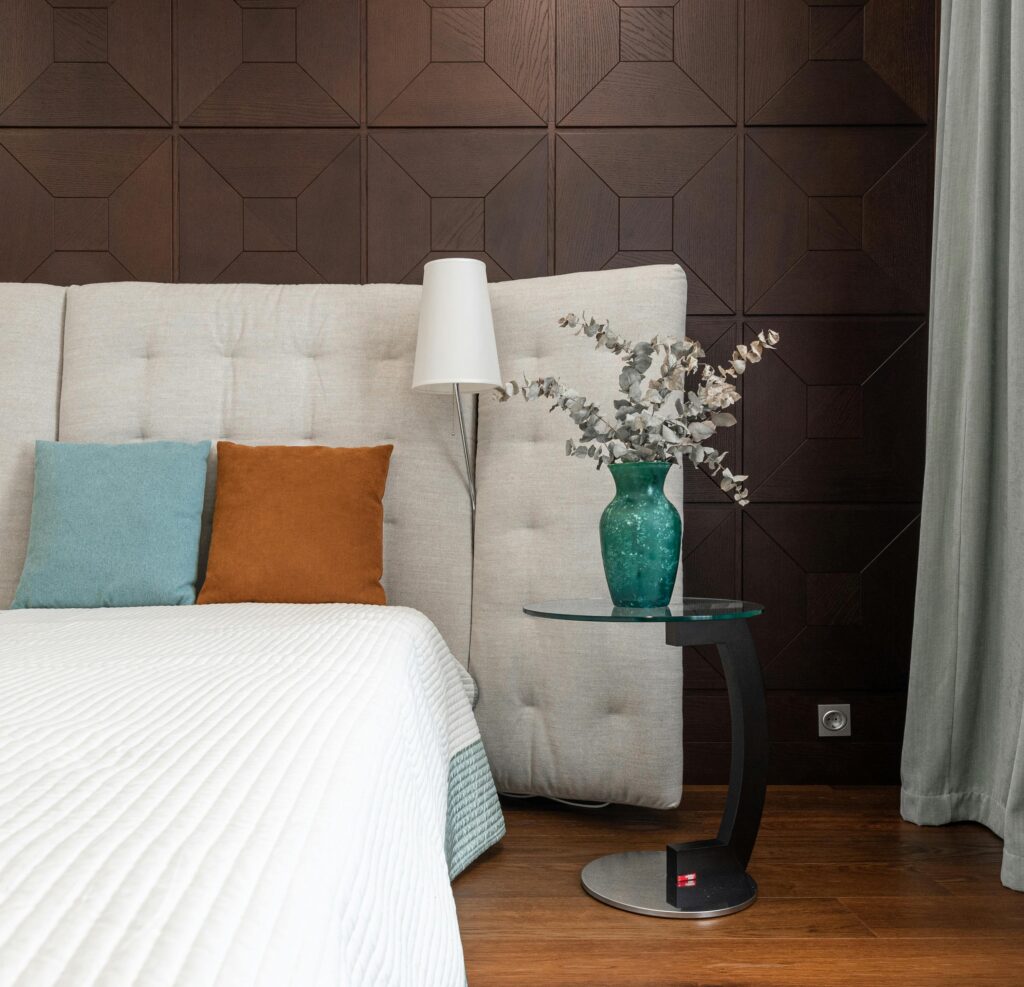The Spill That Changed Everything

I’ll never forget the night that shattered my hosting confidence. It was my best friend’s engagement party, and I had volunteered my apartment as the venue. After weeks of planning – string lights carefully draped, a carefully curated playlist, and my grandmother’s lace tablecloth ironed to perfection – everything was going beautifully until…
“Oops.”
That single word from my cousin Daniel still haunts me. I turned just in time to see an entire glass of Shiraz waterfalling onto my brand new $300 ivory duvet cover. The rich red liquid spread like blood at a crime scene, and the room fell silent. Daniel’s face turned as white as the sheets he’d just ruined.
“I’m so sorry! I’ll pay for new ones!” he stammered. But money wasn’t the issue. This was the third set of nice sheets destroyed in as many months. As I spent the next hour frantically dabbing at the stain with club soda (while pretending not to be upset), I had an epiphany: There had to be a better way.
The Quest Begins
The next morning, nursing both a wine stain and a slight hangover, I became a woman obsessed. I scoured the internet for “unstainable sheets,” reading through hundreds of product reviews and fabric care forums. My search history looked like a mad scientist’s notebook:
“Best stain-proof bedding”
“Does Scotchgard really work?”
“Nanotechnology in textiles”
“How to remove 3-day-old red wine stains (help!!!)”
I learned that most “stain-resistant” sheets fall into one of three disappointing categories:
First, there were the pretenders – regular cotton sheets with a light chemical coating that washed out after a few cycles. Then came the plastic-feel microfiber options that made you sweat like you were sleeping in a grocery bag. Finally, there were the expensive “performance fabric” sheets that still somehow managed to absorb coffee like a sponge.
Just as I was about to give up, I stumbled upon a Reddit thread where a hotel housekeeper swore by some new European brand using Tencel and “permanent molecular stain shielding.” The before-and-after photos looked too good to be true – red wine, coffee, even ink beading up like water on a duck’s back. I needed to try them for myself.
ullamcorper mattis, pulvinar dapibus leo.
The Experiment

When the package arrived two weeks later (shipping from Germany wasn’t cheap), I’ll admit I was skeptical. The sheets felt almost too nice – cool and silky like high-end cotton, with a subtle sheen. They didn’t have that plasticky feel I’d come to associate with stain-resistant fabrics. But looks could be deceiving.
I decided to conduct what I called the Ultimate Stain Challenge. On my kitchen counter, I laid out samples of different fabrics: my old cotton sheets, some microfiber ones I’d bought as backup, and these new miracle sheets. Then I brought out the staining agents:
- Red wine (the obvious villain)
- Coffee (my morning nemesis)
- Lipstick (because I’m a glamorous spiller)
- Soy sauce (for Asian food nights)
- Turmeric (because I’d heard it was the devil to remove)
The results were staggering. While the other fabrics absorbed stains immediately like thirsty sponges, the new sheets made liquids bead up and roll off like rain on a freshly waxed car. Even the turmeric – notorious for its staining power – wiped clean with just water.
But could they survive a real-world test?
The Redemption Party
Two weeks later, I hosted another gathering – this time with my new “indestructible” sheets proudly on display. When Daniel arrived, he eyed the ivory bedding nervously. “Are you sure you want me near those?” he joked.
“Go ahead,” I dared him. “Try to ruin them.”
The whole party gathered as he dramatically poured a few drops of wine onto a pillowcase. The group oohed and aahed as the liquid pooled on the surface, completely failing to absorb. A quick dab with a napkin, and it was like nothing had happened.
That night, something shifted in my hosting mentality. Instead of anxiously monitoring drinks near the bedroom, I found myself actually relaxing. When someone spilled salsa on the bed during a late-night snack run, we all just laughed and wiped it up. No stress, no ruined linens, just good times with good friends.
The Science Behind the Magic

Curious about how these sheets worked their witchcraft, I reached out to Dr. Sarah Chen, a materials scientist at MIT specializing in textile engineering. What she explained blew my mind.
“Most stain treatments are like raincoats – they sit on top of the fabric and wear off over time,” she told me. “What you’ve got here is something fundamentally different at the molecular level.”
The magic, she explained, comes from three key innovations:
- Tencel Lyocell Base: Made from sustainably sourced eucalyptus, this fiber is naturally moisture-wicking and antibacterial. Unlike cotton that absorbs, it’s designed to move moisture away.
- Molecular Bonding: Through a process called covalent bonding, stain-resistant molecules become permanently attached to the fabric’s fibers. This isn’t a coating – it’s literally part of the material’s structure now.
- Nano-Scale Engineering: The fibers are constructed with microscopic ridges that create surface tension, making liquids bead up instead of soaking in. It’s the same principle as lotus leaves, which stay clean despite growing in muddy water.
“The real breakthrough,” Dr. Chen explained, “is that this treatment lasts because it’s not sitting on the fabric – it is the fabric now. You could wash these sheets 500 times and they’d still repel stains.”
Real World Testing
Of course, laboratory conditions are one thing – real life is another. Over the next six months, I put these sheets through every possible scenario:
The Makeup Meltdown: My sister slept over after a wedding, transferring a full face of foundation and waterproof mascara onto the pillowcase. Normal sheets would have been ruined, but these washed clean with just cold water.
The Sick Day Disaster: When I came down with the flu, the sheets’ antibacterial properties prevented that “sick room” smell, even after days of sweating out a fever.
The Oily Food Incident: My husband’s midnight snack of buttery popcorn left grease stains that would have permanently marked cotton, but wiped right off these.
After 50+ washes, the sheets showed no signs of pilling or wear, and the stain resistance remained as strong as day one. They’d even survived an encounter with a leaky pen (though I don’t recommend testing that intentionally).
The Unexpected Benefits
While stain resistance was my original goal, I discovered several surprising advantages:
- Temperature Regulation: Unlike plastic-feel microfiber, these kept me cool in summer and warm in winter. The Tencel fibers breathe like cotton but wick moisture better.
- Hypoallergenic: As someone with sensitive skin, I appreciated that they resisted dust mites and mold naturally.
- Durability: After two years of heavy use, they still look and feel new, outlasting cheaper sheets that pilled or tore.
- Eco-Friendly: The closed-loop production process uses far less water than conventional cotton, and the eucalyptus grows quickly without pesticides.
The Psychology of Spill-Proof Sheets
What surprised me most wasn’t the physical benefits, but the psychological ones. Before these sheets, I was that host – nervously watching drinks near furniture, subtly moving plates away from bedding, stressing over potential messes instead of enjoying my guests.
Now? I’m relaxed. When my niece spilled grape juice during a family brunch, I calmly handed her a napkin instead of having a minor heart attack. When friends wanted to eat breakfast in bed during a weekend visit, I didn’t awkwardly suggest the dining table instead.
This shift made me realize how much mental energy I’d been wasting on protecting possessions instead of being present with people. The sheets didn’t just protect my bedding – they freed me to be a better host.
The Ultimate Test

The real moment of truth came last month, when Daniel got married. As his wedding gift, I outfitted the honeymoon suite with a set of these miracle sheets. The morning after the wedding, I got a text with a photo of a champagne stain beading up on the pillowcase, followed by: “You’ve changed my life. Also, we’re keeping these.”
Final Thoughts
In the end, these sheets taught me an unexpected lesson: The best home solutions aren’t just about protecting our things – they’re about removing barriers to connection. By eliminating the fear of stains, I’ve been able to focus on what really matters when hosting – the laughter, the conversations, the memories being made.
So if you’re tired of treating your home like a museum, if you want to actually enjoy your next party instead of policing it, maybe it’s time to invest in sheets that can keep up with your life. Because the best gatherings aren’t the ones where nothing gets spilled – they’re the ones where it doesn’t matter when it happens.
Now if you’ll excuse me, I have a book club meeting to host. And yes, we’ll be drinking red wine. On the white couch. Because life’s too short for stain anxiety.
What’s your worst hosting disaster? Share in the comments!
Huma Bedsheets is a reformed neat freak and advocate for stress-free entertaining. When not testing stain-resistant products, she’s hosting impromptu dance parties in her indestructible living room.




